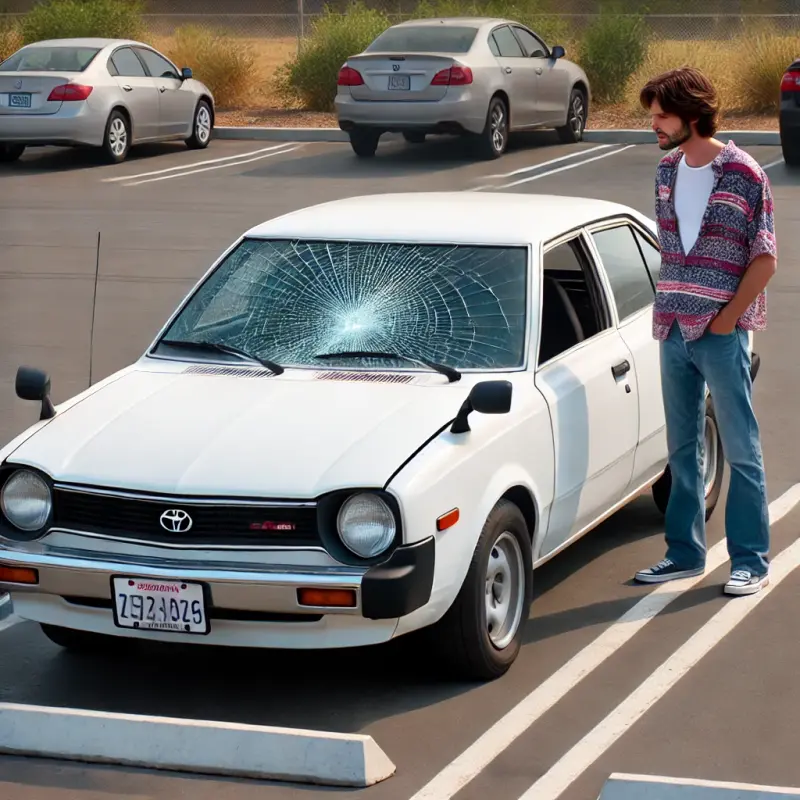Introduction
Repairing a windscreen at home can seem daunting, especially if you’ve never attempted it before. However, with the right tools, knowledge, and preparation, it is entirely possible to tackle this task effectively. Whether you’re dealing with minor chips or cracks or considering a full windshield replacement due to extensive damage, having a checklist can save you time and ensure a successful outcome. This article serves as your comprehensive guide— Your Complete Checklist Before Starting a Windscreen Repair Job at Home.
Understanding the Importance of Windscreen Maintenance
What Role Does the Windscreen Play in Vehicle Safety?
The windscreen provides structural integrity to your vehicle and protects passengers from external elements. It also plays a critical role in the effectiveness of airbags during accidents. A compromised windscreen can lead to severe consequences; therefore, maintaining its condition is paramount.
How Do Chips and Cracks Affect Your Windshield?
Chips and cracks can expand over time due to temperature changes or road vibrations. Ignoring these imperfections can lead to more significant issues requiring a windshield replacement instead of simple repairs.
Your Complete Checklist Before Starting a Windscreen Repair Job at Home
Before diving into the repair process, it's essential to prepare adequately. Here’s your ultimate checklist:
1. Assess the Damage
- Identify Chip Size: Measure the size of the chip or crack. Determine Location: Is it in the driver’s line of sight? If so, professional help may be advisable. Evaluate Severity: Minor damages are usually fixable; however, anything larger than three inches may require complete replacement.
2. Gather Necessary Tools
- Repair Kit: Purchase a high-quality windshield repair kit that typically includes resin, injector tool, and curing film. Safety Gear: Wear gloves and protective eyewear. Clean Cloths: To wipe down surfaces and remove dirt.
3. Choose an Appropriate Environment
- Weather Considerations: Choose a dry day with moderate temperatures; extreme heat or cold can affect resin curing. Clean Workspace: Ensure you're working in an area free from dust and debris.
4. Read Instructions Carefully
Every repair kit comes with specific instructions that must be followed closely for optimal results.
Types of Damage You Can Repair
Small Chips
Small chips (less than 1 inch) are often easy fixes and can be repaired without professional assistance.
Long Cracks
Long cracks (over 6 inches) typically indicate that replacement is necessary as they compromise the windshield's integrity.
Step-by-Step Guide to Windscreen Repair
Step 1: Clean the Area
Use your cloths to clean both sides of the damaged area thoroughly.
Step 2: Apply Resin
Follow your kit’s instructions to inject resin into the crack or chip carefully.
Step 3: Cure the Resin
Allow time for the resin to cure as per manufacturer guidelines—this usually involves sunlight King Auto Glass exposure or UV light application.
When to Consider Windshield Replacement
Sometimes repairs aren’t enough; here’s when you should consider windshield replacement instead:
- The damage is larger than three inches. Multiple chips exist close together. The crack extends into any corner of the windshield. The integrity of the glass has been compromised significantly.
The Cost Factor: Repair vs. Replacement
| Aspect | Repair | Replacement | |----------------------|---------------------------|-----------------------------------| | Cost | Lower cost (typically $50-$100)| Higher cost ($200-$600+) | | Time | Quick (usually under an hour)| Longer (several hours) | | Safety | Restores functionality | New glass guarantees safety |

Common Mistakes During DIY Windscreen Repairs
Skipping Cleaning Steps Using Low-Quality Kits Ignoring Weather ConditionsSafety Tips While Working on Your Car's Windscreen
- Always wear safety goggles. Ensure your vehicle is parked on level ground. Keep tools organized and within reach for efficiency.
FAQs About Windscreen Repair
Q1: Can I repair my windscreen if it has multiple chips?

Q2: How long will a DIY repair take?
A2: Generally, it takes about an hour for small repairs, including prep time but may vary based on conditions like weather.
Q3: Will my insurance cover windscreen repairs?
A3: Many insurance policies cover repairs without deductibles; check with your provider for specifics related to your coverage.
Q4: What materials do I need for proper windscreen repair?
A4: A repair kit containing resin, injector tool, curing film, along with cleaning towels will suffice.
Q5: Are repairs permanent?
A5: While they restore functionality significantly, some repairs might still be visible after completion but do not compromise safety anymore.
Q6: How often should I check my windscreen for damage?
A6: Regularly inspect your windscreen whenever you wash your car or notice visibility issues during driving conditions.
Conclusion
In conclusion, taking on a windscrewn repair job at home can be manageable if approached correctly with adequate preparation and understanding of what’s involved. By following this detailed checklist— Your Complete Checklist Before Starting a Windscreen Repair Job at Home, you'll set yourself up for success while ensuring both safety and efficiency in handling minor damages effectively without professional assistance when appropriate. Remember that if you ever feel uncertain about tackling repairs yourself—especially those that involve potential safety risks—consulting professionals is always wise!